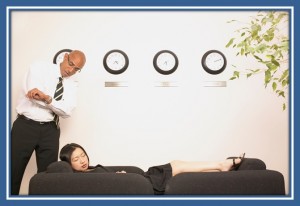Who looks outside, dreams. Who looks inside, awakens. – Carl Jung
Napping and Productivity – Edison had the right idea:
Now that I am retired I can indulge in a nap. Surprisingly, or maybe not, I find that some of my best dreaming comes from a brief siesta. Before those of you who cannot give into this little luxury condemn my candid confession, there are actually studies on this mode of sleep and the health and problem solving benefits of napping.
There are a number of permutations to this story but supposedly Thomas Edison realized the importance of a good nap in spawning creative ideas, or in working through creative problems. He was reported to sleep very little, requiring only 4-5 hours of sleep at night, but offsetting this habit by utilizing naps as a way of recharging his creative juices and physical batteries. To maximize both his creativity and productivity he engaged in a practice which utilized the relaxed awareness state of the sleep cycle by sitting in a chair with ball bearings in his hands. As he drifted into sleep his hands would relax enough for the ball bearings to fall from his hands and hit metal plates or pie tins he placed under or near the arms of his chair. The noise of the bearings hitting tin would awaken him.
In essence what Edison was doing was utilizing a state of mind called hypnagogia or “threshold consciousness.” This is the state of suspended consciousness as we drift in and out to sleep. It is here on the edge of sleep where our minds wander freely, released for a time from the restraints of cognitive or emotional concentration. It is in this threshold state that we often find answers to problems or new perspectives. Even though it is extremely doubtful that Mr. Edison was aware of the neuroscience behind “hypnagogia” he seems to have known that honoring napping was a productive way to solve problems and that this state of mind was useful to his productivity as an inventor. He seems to have found a way to capitalize on his need for naps as a way of helping him tackle conundrums or find inspiration for new inventions.
Some folks have figured out that sleep threshold insights are valuable and keep pen and paper next to their beds to jot down ideas when they wake from the hypnagogia state. Other cultures seem to realize the regenerative power in a nap and provide siesta time. It is interesting to note that some Japanese firms are providing time and space for sanctioned naps.
The Swirls – A Poem about the power of daydreams
More info on the power of napping:

